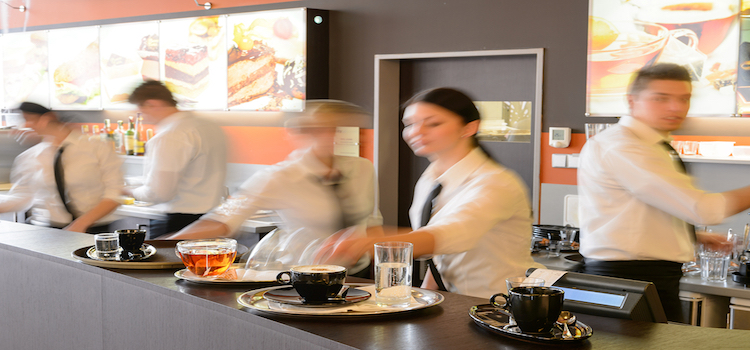This post is sponsored by Upserve.
Technology’s role in restaurant operations is increasing as more eateries adopt digital systems to manage orders, reservations, scheduling and more. Tech solutions can be true time-savers for restaurant operators and provide a wealth of data, but knowing how to utilize that data is essential to getting the most out of restaurant tech.
One area where this data can be especially useful is in informing and analyzing the people on both sides of the counter who fuel the restaurant business — employees and customers. The rate of employee turnover in the restaurant industry is more than 70% according to the Bureau of Labor Statistics, and monitoring and training staff can be a daunting task. Taking a data-based approach allows restaurant operators to maximize efficiency and concentrate their training efforts on the employees who most need help, while also rewarding their star staff members. On the customer side, tracking visits and behavior empowers operators to treat every guest with a personal touch.
Access to data is just the beginning
In order to make the most of the customer insights it was already collecting, Texas-based restaurant company Chamberlain’s Dining Establishments partnered with a restaurant technology company, Upserve, to analyze the numbers and present them in a way that’s easy to understand.
“We can generate reports from our POS, but Upserve puts it into a simpler format and makes it a little bit easier for everyone to look at and access and make decisions on,” Chamberlain’s owner Jeffrey Barker said. The Upserve Restaurant Management Platform pulls the data for operators and assembles reporting that can help make restaurants more efficient. This saves Barker and his staff the time it would take to sort through raw data looking for trends and offers reports on specific details about turn times, guest behavior, server performance and which menu items are most popular.
Track staff and measure motivation
With data organized into meaningful reports, operators can set goals that are more specific than simply getting servers to work faster or make more sales. Concise goals based on data can more easily be translated into actionable training programs.
“To see a true impact on business, training programs should be focused on clear goals,” said Nicole Theohary, Senior Account Manager at Upserve. “How do we pinpoint clear, concise goals? A great tip is the ‘5 Question Rule’. Once you find an area for improvement, ask five more questions to ensure you’re at the heart of it. This is where tech and training comes into play. Technology can pull real time analytics to your team’s performance. With a clear goal in mind, you’re able to develop a training program to drive the solution,” she said.
Among the services and tools offered by Upserve is an employee leaderboard that lets operators rank their employees based on performance. Seeing all this information plainly laid out can help operators identify each team member’s strengths and weaknesses, and set personalized goals for improvement.
Get insight into guests’ behavior
Breaking down and analyzing data also allows restaurants to offer a personalized experience for diners, which can lead to increased visits, higher checks and enthusiastic recommendations.
Keeping track of guest info such as birthdates, anniversaries and food allergies allows restaurateurs to be prepared to offer a personal touch, like a free dessert or a menu recommendation based on a customer’s dietary needs. In addition, simply tracking visits can be illuminating.
“There are some customers that are here more often than the regulars I knew of, so now I can seek them out and pay more attention to them,” Chamberlain’s Barker said.
Tracking which menu items customers keep coming back for can help servers make a recommendation based on data, whether the customer is a returning VIP or a first time visitor. “By looking at unbiased data of what menu items are driving customers back in the door, [restaurant operators] are able to source opportunities to increase the bottom line,
Upserve’s Theohary said. “Stacking your servers with the ability to cross sell and upsell is a triple win — your guests have a better experience, your servers raise the dollars they bring home at the end of the shift and you raise your bottom line and overall lifetime value of a guest.”
For more insights on how to use data to better manage your staff and deliver a superior customer experience, visit Upserve at booth #5857 during the National Restaurant Association Show May 20-23 at Chicago’s McCormick Place.
_______________________________________________
If you enjoyed this article, join SmartBrief’s email list for more stories about the food and beverage industry. We offer 20 newsletters covering the industry from restaurants to food manufacturing.
